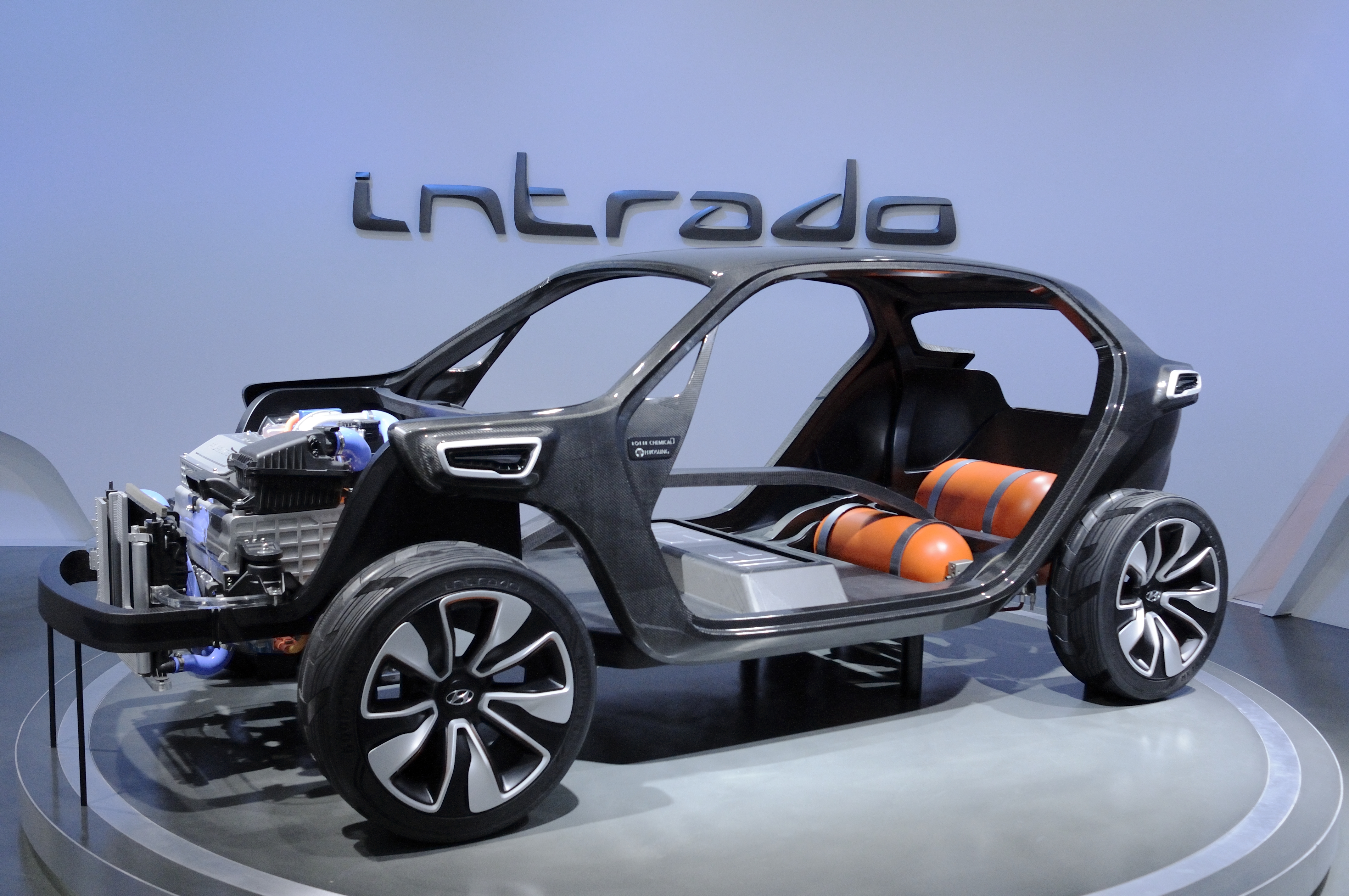
Two advanced composites materials developed by Scott Bader have been used to manufacture the chassis of the Intrado super-lightweight carbon fiber-reinforced plastic (CFRP) car, which won the JEC 2015 Jury Prize in Paris.
The vacuum infused chassis components for the vehicle use Crestapol 1250LV as the acrylic thermoset resin while all of the chassis and frame CFRP components are robotically bonded together using Crestabond M1-20 primer-less structural adhesive.
Molding process
The structural beam technology has a 3D woven structure, comprising a carbon fiber braid over machine laid multiple preforms made of closed cell low density polyethylene foam. Crestapol 1250LV resin is then infused by vacuum assisted resin transfer molding around the carbon fibers and LDPE preforms. During the molding process, the LPDE foam expands and takes the shape of the tool, creating the internal structure with shear webs.
Crestapol 1250LV is an ambient temperature curing urethane acrylate based thermosetting resin, which is compatible with carbon fibers. It was developed by Scott Bader specifically for producing high performance carbon fiber reinforced and glass fiber parts by vacuum infusion, resin transfer molding or any closed mold process.
This story is reprinted from material from Scott Bader, with editorial changes made by Materials Today. The views expressed in this article do not necessarily represent those of Elsevier.




